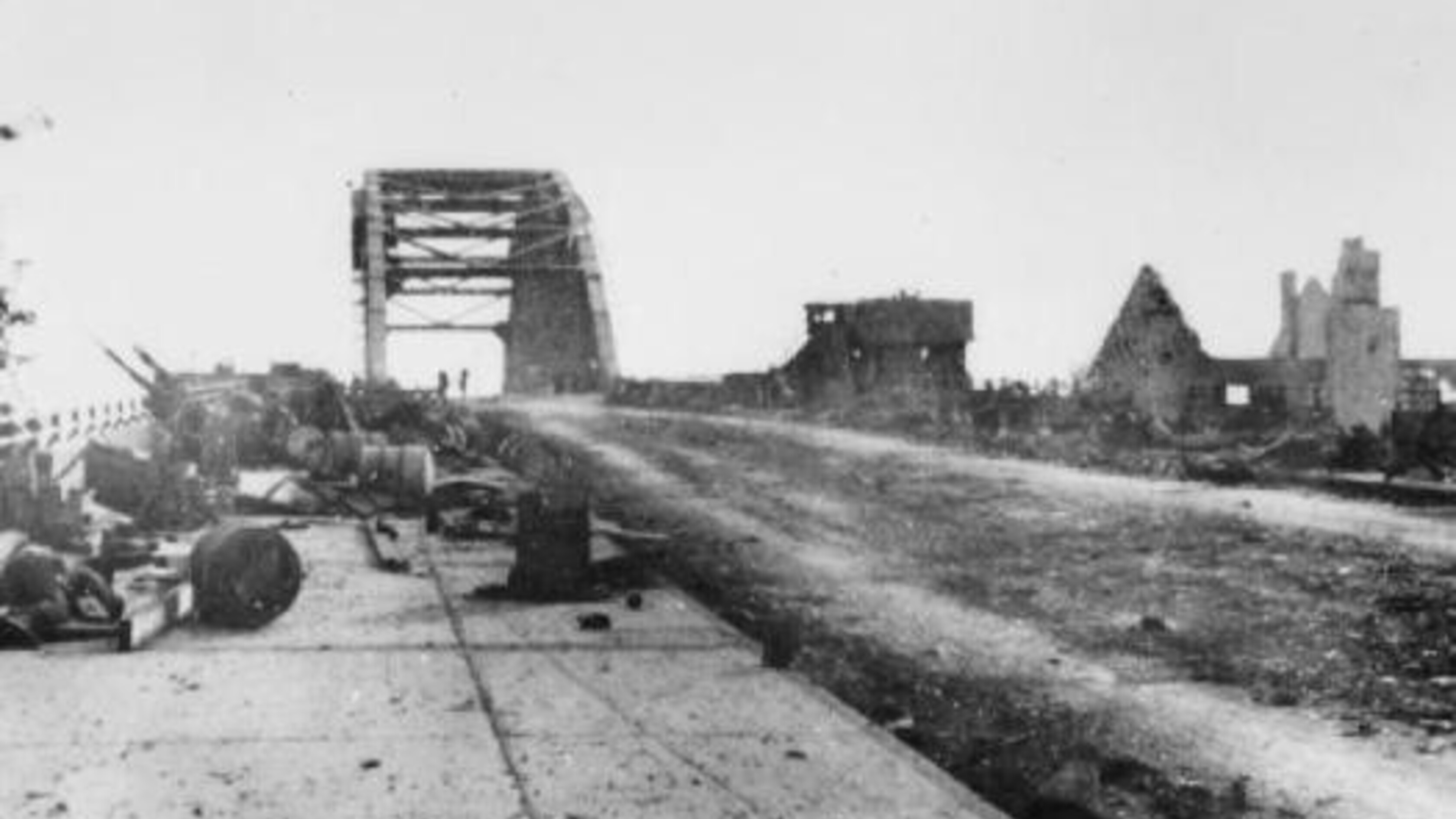The pokerissimo was the only point that allowed the war to be won in the autumn of 1944. Five bridges to be conquered in Holland, and not one less, on the rivers Meuse, Waal and Rhine, to bypass the Siegfried Line and threaten Berlin. History teaches us that the poker in Marshal Bernard Law Montgomery’s hand was not enough, because in Arnhem “Market Garden” failed, the largest airborne operation in history launched on 17 September 1944 and destined to end ten days later, without being able to enter Germany and put an end to Hitler and that conflict by the end of the year. Already at the end of 1943 Montgomery had not been able to take advantage of the victory in the Battle of the Sangro to break the Gustav Line and put Kesselring’s army in crisis, giving him time for countermoves and to wear down a Canadian and a New Zealand division in Ortona and Orsogna.
A wishful plan with the use of 40,000 paratroopers
In 1944, the collapse of the Wehrmacht in the Falaise pocket in France and the reports from the Dutch resistance, which spoke of the weakness of a defense line by the retreating Germans, provided the elements for a strategic success that had to be exploited. But the Marshal was cautious by nature and the coordination between the Allies was certainly not among the best.
The hastily drawn up plan was divided into an air phase (Market, entrusted to the paratroopers of the 1st Airborne Army, under American command) and a land phase (Garden, XXX Corps under British command that was supposed to relieve the paratroopers in controlling the bridges), based on speed of execution, timing and understanding. A clockwork mechanism that involved approximately 42,000 airborne soldiers, three infantry divisions and armoured troops. With too many unknowns, however.
The Germans had anticipated the attack and reacted vigorously.
The key was to capture five bridges along parallel lines, not giving the Germans time to counterattack and forcing them to hastily retreat across the Rhine. Except that the Wehrmacht generals had no intention of retreating nor could they be taken completely by surprise because they expected an attack in that crucial sector: with the roles reversed, the strategists Model, Rundstedt and Student (the latter commander of the paratroopers) would have conducted a large-scale offensive. They were naturally unaware of the details of the plan, just as the Allies were unaware of the presence of an SS armored division with heavy Tiger tanks.
The timetable jumps almost immediately. The fatal delays
A vast wave-long aerial bombardment pounded German positions and airfields for an entire day starting on the evening of September 16. On the morning of the 17th, the paratroopers of the 82nd and 101st divisions began boarding over two thousand transport planes and gliders. The launch and landing on the targets of Arnhem and Eindhoven took about 20 thousand men with vehicles and guns in the direction of the poorly manned and defended bridges of Heeswijk, Veghel and Oedenrode. The Germans had instead managed to blow up the bridge of Son in time, immediately putting a wedge in the Market Garden timetable. The reaction of the Wehrmacht, the Kampofgruppe and the Waffen SS divisions was not long in coming, once the initial surprise had passed.
Problems had already begun on the British side with communication difficulties between units on the battlefield and with the bad weather that in England had slowed the departure of the second wave of 2,500 paratroopers, while the 1st Polish Brigade had to remain on the ground. Hunting and bombing operations were impossible, nullifying air superiority. The Germans fought tenaciously to defend every bridge and counterattacked effectively where possible. Delays on the Allied timetable were piling up despite the progress on the field, where too many variables were weighing on the strategic outcome.
Courage is not enough to win the decisive battle
It was already clear that the battle would be decided at Arnhem, where the British paratroopers of Colonel Frost’s 1st Brigade were under pressure from the first moment and were hit by a large-scale attack by SS infantry and armor, even rejecting an offer of surrender and retreating to house-to-house defense, now isolated. By September 21, the battle was unsustainable due to losses and the exhaustion of ammunition. At that same time, the Allies were securing control of Nijmegen by land.
The Germans expected that General Sosabowski’s Polish brigade, finally transported to Holland, would rush to the aid of the English at Arnhem, while instead, with a choice that was not very clear, they had been sent to support the besieged in the Oosterbeek pocket, crossing the Rhine. The Germans resisted tenaciously at Eindhoven, but between 22 and 23 September it was clear that Operation Market Garden was headed for failure, precisely because of the impossibility of conquering the fifth bridge, the one over the Rhine. The pokerissimo had become a bluff and Montgomery had been served.
An attempt that came at a very high price
During the night of the 25th, about 2,400 exhausted English and Polish men managed to abandon the northern bank of the river to regain their lines thanks to Operation Berlin, which managed to guarantee a safe corridor away from the Wehrmacht and the SS. The Germans had managed to hold and close the door to Germany. The Allies had lost between 17,000 and 20,000 men, including fallen, wounded and prisoners. The Dutch civilian casualties were even higher. The Germans had paid with 7,000 losses. Montgomery had not celebrated Christmas in Rome in 1943, just as he did not celebrate Christmas in 1944 in Berlin. Holland was liberated only on 5 May 1945. The bridge that was not taken at Arnhem was destroyed during the war; rebuilt in 1948, it was named after Colonel John Frost.
